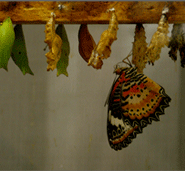Enter a white cube: Sterile. Sombre. Spotless, shadow-less. Sedentary, Sparse. Object after object neatly perched on a pedestal or framed and suspended from nails on pristine white walls. The square space interpellates you into the materialist system of the evaluation of art objects against a monetary value. The endless reproduction of artwork through various media allows Art to be commoditised; it's value in the art market far exceeding its value as a unique/singular experience.
Railing against commodity-fetishism in the art market is a former student of Economics, now conceptual artist, Tino Sehgal. Unlike those who eschew gallery and museum spaces to stage their dissent, he situates himself within the white cube and makes it wear itself inside out. He de-objectifies the gallery space and builds into the character of his work all that is prohibited in a museum space. Thus, the artist critiques the structure of the white cube from within, acquires a place inside the system to critique its materialism and code.
Editor's Note.
I was about 9 years old—a 3x3 cube—and my school had a class, an hour a week, called 'Value Education'. Our teacher gave us an A4 sheet of paper, split into 12 boxes. Each box had a patternless constellation of dots. Our task was simply to create a square, a rectangle or a triangle within each box, without leaving a single dot astray.
While I connected the dots into stars and baby elephants with stubbed noses and large antennae, my peers were coerced—I say coerced because it was a time when lines did not come naturally to us, when we didn't feel obliged to color inside trees and they didn't need to be green—into following the structure.
Read MoreWhile I connected the dots into stars and baby elephants with stubbed noses and large antennae, my peers were coerced—I say coerced because it was a time when lines did not come naturally to us, when we didn't feel obliged to color inside trees and they didn't need to be green—into following the structure.
Also in this issue
Illusion: Seeing Beyond Seeing
Meaning: In Search of Significance.
Melody: A Different Tune
Rhythm: Ordering Time









